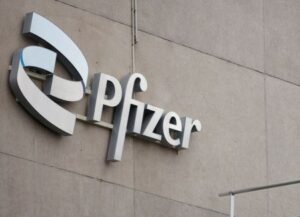By Stephen Culp
NEW YORK (Reuters) – Wall Street closed sharply higher and the dollar softened on Friday as investors closed the books on a solid quarter, with data showing progress in the Federal Reserve’s efforts to tame inflation.
All three major U.S. stock indexes surged, notching weekly, monthly and quarterly gains.
“It’s a nice cherry on top to the end of a great quarter and an even better start to 2023,” said Ryan Detrick, chief market strategist at Carson Group in Omaha. “This was one of the best starts to the year ever for Nasdaq and large cap technology names, but let’s not forget they were the hardest hit group in the vicious bear market of 2022.”
In the first half of 2023, the S&P 500 advanced 15.9%, while the tech-heavy Nasdaq Composite rode the artificial intelligence wave, surging 31.8%, its best performance in four decades.
The Nasdaq 100 logged its biggest first-half gain on record, jumping 38.8%.
The Dow registered a 3.8% year-to-date gain.
“The market continued to climb a wall of worry fueled by optimism surrounding AI, which represents a new growth driver in a premier growth sector,” said Sam Stovall, chief investment strategist of CFRA Research in New York.
The Personal Consumption Expenditures (PCE) report from the Commerce Department showed cooler-than-expected inflation in May, while consumer spending abruptly decelerated, providing further evidence that the Fed’s barrage of rate hikes are having their desired effect.
“We think the Fed will raise rates in July because they’ve told us that’s what they want to do, but they also remind us that they’re data-dependent,” Stovall added. “If the data continue to show a softening, then I think the Fed will decide to end their rate-hiking program after this upcoming meeting.”
Financial markets are pricing in an 84% probability that the Federal Open Market Committee will implement another 25 basis-point rate hike at the conclusion of its July policy meeting, CME’s FedWatch tool showed.
The Dow Jones Industrial Average rose 285.18 points, or 0.84%, to 34,407.6; the S&P 500 gained 53.94 points, or 1.23%, at 4,450.38; and the Nasdaq Composite added 196.59 points, or 1.45%, at 13,787.92.
European stocks closed higher, notching a 0.9% gain for the quarter as weakening hopes for China’s post-COVID recovery and ongoing concerns over restrictive central bank policies held back an equities rally that began earlier in the year.
The pan-European STOXX 600 index rose 1.16% and MSCI’s gauge of stocks across the globe gained 1.04%.
Emerging market stocks rose 0.31%. MSCI’s broadest index of Asia-Pacific shares outside Japan closed 0.27% higher, while Japan’s Nikkei lost 0.14%.
The greenback lost ground against a basket of world currencies, snapping two straight days of gains after the strong PCE report stoked optimism that the Fed is approaching the end of its tightening cycle.
The dollar index fell 0.42%, with the euro up 0.41% to $1.0908.
The Japanese yen strengthened 0.33% versus the greenback to 144.30 per dollar, while sterling was last trading at $1.2699, up 0.69% on the day.
U.S. Treasury yields softened on weaker-than-expected consumer spending data.
Benchmark 10-year notes last rose 9/32 in price to yield 3.821%, from 3.854% late on Thursday.
The 30-year bond last rose 34/32 in price to yield 3.8505%, from 3.912% late on Thursday.
Crude prices settled higher but posted their fourth consecutive quarterly loss as investors worried about dampening demand.
U.S. crude rose 1.12% to settle at $70.64 per barrel, while Brent settled at $74.90 per barrel, up 0.75% on the day.
Gold prices rose in opposition to the softening dollar, logging their first quarterly decline in three.
Spot gold added 0.6% to $1,918.96 an ounce.
(Reporting by Stephen Culp Additional reporting by Huw Jones in London; Editing by Richard Chang and Rosalba O’Brien)





